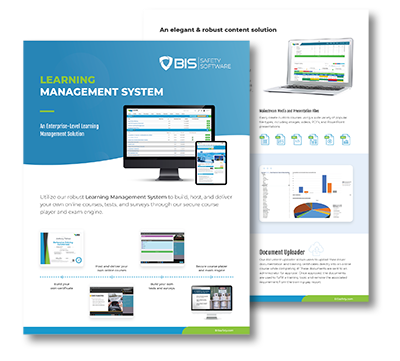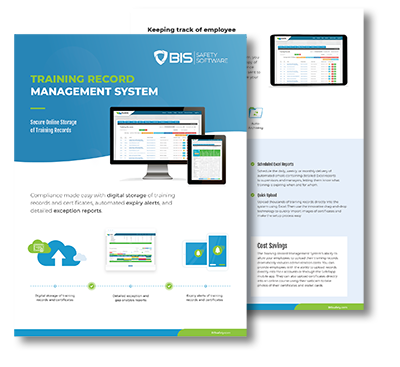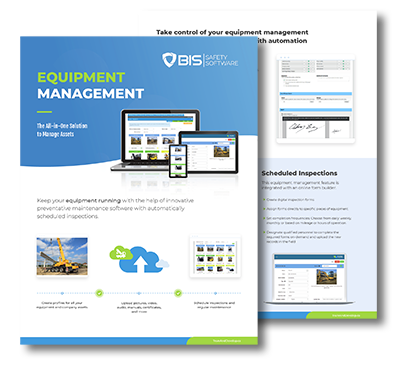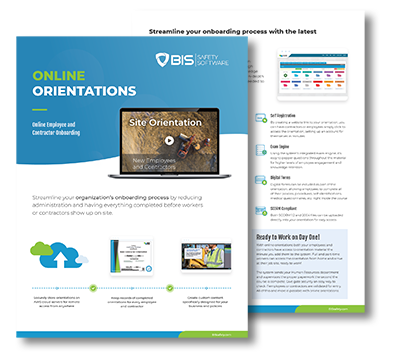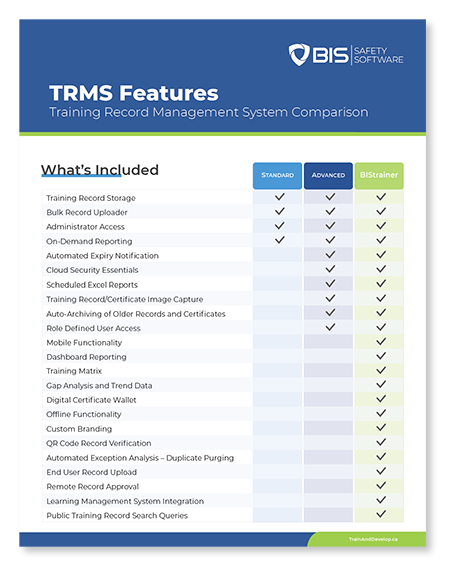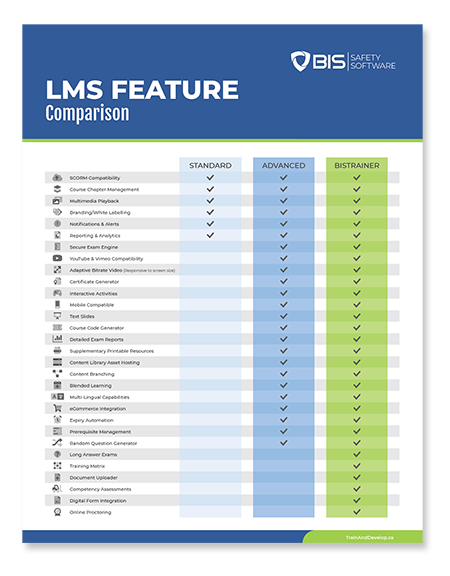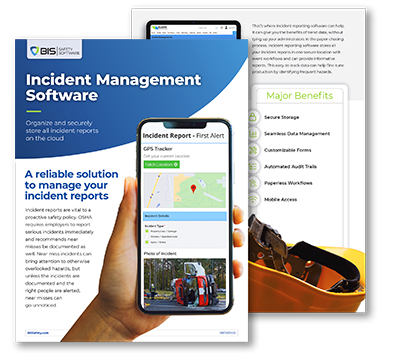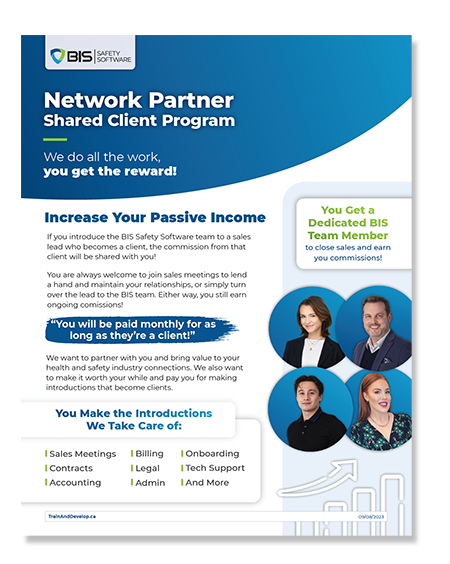Help your drivers prevent accidents and stay safe on the road
Master Driver: Pattern Driving
MASTER DRIVER: PATTERN DRIVING
Imagine…
You grab your keys and head out the door to where your vehicle waits to take you to work. As you settle yourself into the driver’s seat, habit has you buckle your seatbelt. You check your mirrors, back out of your driveway, and pull out onto the road. Your route turns into a series of intersections, turns, and traffic patterns that you’re beyond familiar with. Turn right, turn left, then another left, straight, right, straight…
As you drive, your list of to-dos for the day starts to run through your mind. Your supervisor informed everyone in the shop yesterday that the place was a mess and needed to be cleaned up before noon today. An OH&S inspector is expected next week, and the shop isn’t currently up to housekeeping standards. Once that’s clean and taken care of, you’ll need to load up your truck for tomorrow’s delivery, and then—
You snap back to reality just as a car pulls in front of you. As you were going straight through another intersection as normal, another driver coming from the opposite direction wasn’t paying attention and chose to turn left, cutting directly in front of you. But you weren’t paying attention either. Lost in your thoughts, you’d been too preoccupied to see him moving forward in the intersection. Whether or not you get out of this situation injury free depends on how early and quickly you manage to break out of pattern driving’s trance, register the change in your environment, and react.


The Dangers of Pattern Driving
For most drivers, scenarios like this example aren’t a foreign concept. Although the scenery and details may change, we’ve all experienced situations where we were daydreaming or distracted in our thoughts while driving, only to come back to reality to realize that we can’t remember anything that’s happened over the last few minutes. Sometimes, like in the example we just covered, coming back to reality can be an abrupt or even fatal awakening. But when there are no immediate consequences, we often find it easy to shrug off the lapse in memory. We just got lost in our thoughts. It can’t be that big of a deal, can it?
According to the National Highway Traffic Safety Administration, 80% of motor vehicle collisions have some form of driver inattention as a contributing factor. In fact, the Canadian Automobile Association (CAA) states that driver distraction is a factor in approximately 4 million motor vehicle crashes across North America each year. In 2010 in British Columbia alone, distracted driving contributed to 104 collision fatalities. Often when we think about distracted driving, we picture drivers on their phones with their eyes and attention off the road. But what about daydreaming, boredom, or our own thoughts? Our eyes might be one the road, but are our minds? Do we consider our own internal distractions to be just as dangerous as sending a text while driving?
The Reality of Routine
Regardless of if a driver has been driving for only two years or as many as twenty, every driver has his/her own experiences on the road. These experiences influence each driver’s behaviour in unique ways. When experiences combine with routine, drivers develop habits. While habits can be good and can help keep us safe, on time, and incident free, they can also become dangerous if we are not careful. Often, driving habits and routines are what put our minds on autopilot and take our attention away from the road. Suddenly, we find ourselves victims of a phenomenon called “highway hypnosis,” leaving us unprepared for potential changes in road conditions and open for incidents like that in our previous example.
If we ignore the obvious dangers of pattern driving, we are asking for problems, such as getting pulled over, losing time and arriving late, or injuring ourselves and/or others in a collision. But if we take the hazards of pattern driving seriously and work to prevent it, we can help make the roads safer. This is the difference between a Master Driver and a complacent one. A Master Driver won’t accept anything less than the best. In order to become Master Drivers, we must have a complete understanding of pattern driving, how to break patterns on the road, and how to stop them before they start.
MASTER DRIVER: PATTERN DRIVING ONLINE COURSE OVERVIEW
This course was designed to provide you with strategies that will help keep you alert and aware while on the road. These strategies will also help you avoid hazardous situations that can occur when coming out of a pattern-driving daze. After completing this course, an understanding should be gained of:
- How to recognize pattern driving
- Common causes of pattern driving
- How to prevent pattern driving
- How to safely interrupt pattern driving
Audience
Because habits, routine, and pattern driving are problems all drivers encounter in their daily driving routines, the content in this course is applicable to any driver seeking to improve his/her safety on the road.
Presentation
The course is presented with voice-over narration and features dramatic footage, dynamic graphics, 3-D animation, hazard perception challenge scenarios, and “Road Wise” commentary from seasoned transport pros. Instructions on how to navigate the course are provided in the course introduction.
Resources
A 14-page .pdf transcript is available to print and reference while completing the online course. The transcript contains all of the voice-over presented in the course, including any examples used to illustrate the concepts covered.
MASTER DRIVER: PATTERN DRIVING ONLINE COURSE TOPICS
Material in this online training course is presented in three parts:
What Is Pattern Driving?
Before you can prevent pattern driving, you must understand what it is. This module covers the definition of pattern driving, its hazards, and its potential consequences. You’ll also learn how interstate driving, rural driving, and city driving routes can all lead to highway hypnosis and complacency.
Causes
No matter what form pattern driving takes, the root causes are always the same. This module covers the factors both outside and inside the cab that most commonly result in pattern driving hazards. The goal of this module is to teach you how to recognize the signs of pattern driving so that you can prevent its occurrence and keep yourself and others on the road safe.
Strategies – Breaking Routines
Fighting pattern driving takes real effort, but it’s imperative that you recognize when it’s happening and work to stop it. This module covers techniques to use that break spell-binding patterns and force your mind to engage in the task of driving. You’ll learn how to keep your mind active and in sync with your body and with the world outside your vehicle.
Duration
Average Completion Time
Completion times vary depending on the number of times the information is viewed prior to finishing the course. The average completion time is 45 minutes.

Testing
Knowledge Assessment
Testing is conducted in this online course to reinforce the information presented. You are provided three opportunities to achieve a passing mark of 80% or greater.

Certificate
Certificate of Completion
Upon successful completion of this course, a certificate will be available to download and print. You can access your certificate through your online account.





















